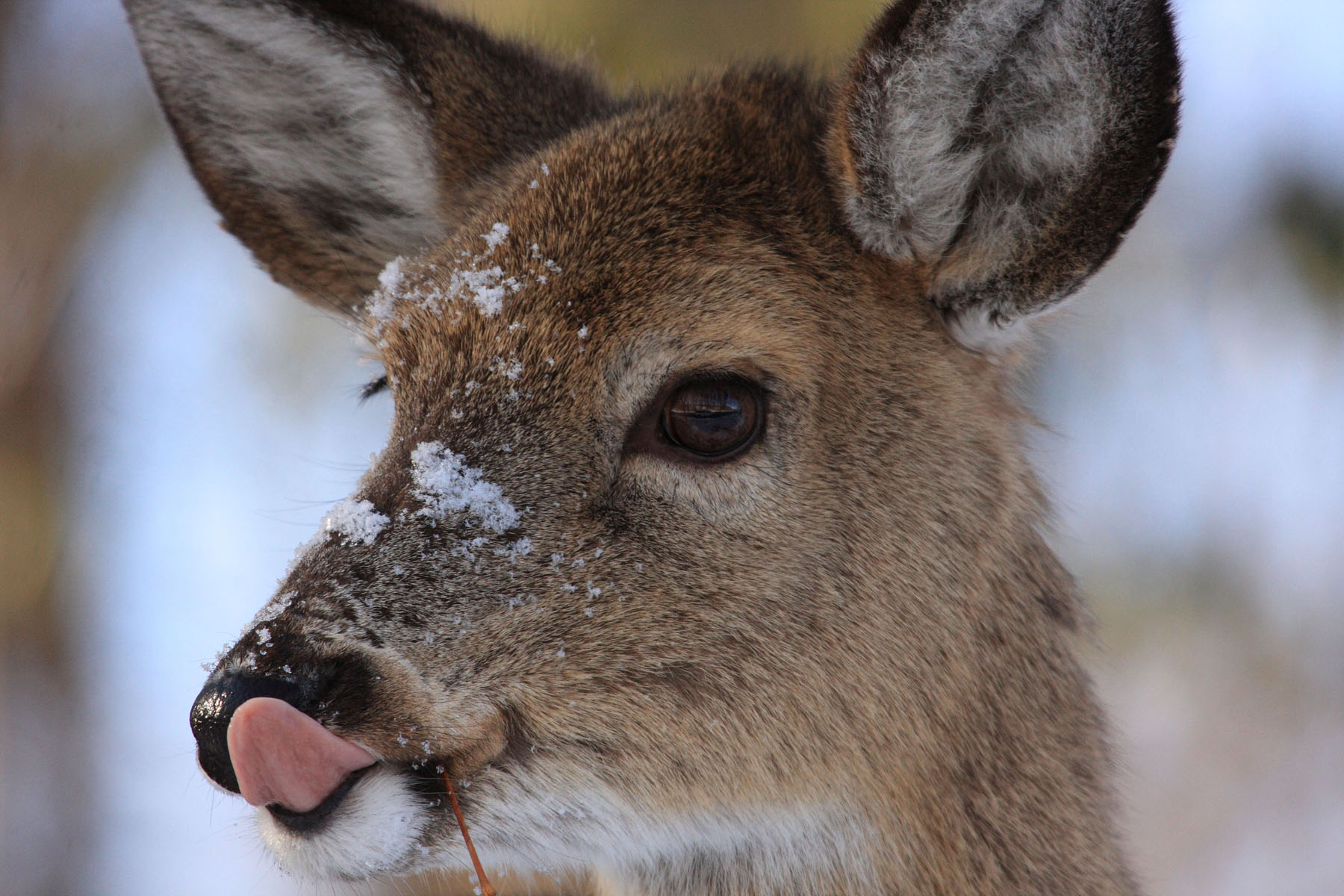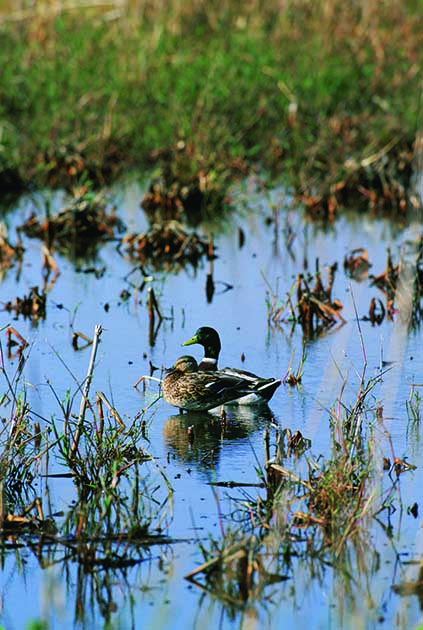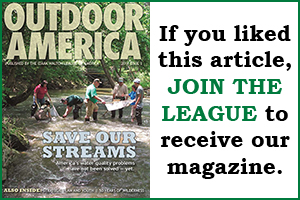Any exploration
of outdoor ethics necessarily rambles along between the high, solid wall of legality and the uneven, easily vaulted fence line built on the concepts of right and good (or our perceptions of them). When those two boundaries merge, the resulting barrier
is almost impenetrable and personal behavior is generally acceptable to the majority of people. Where they diverge, allowable behavior is more dependent upon individual outlook and can vary wildly.
To make matters more confusing, the concepts of right and good — building blocks of ethics — are siblings of different fathers, much alike but certainly not the same. In addition, they shift and change depending on the situation, location,
weather, and — most especially — the eye of the beholder.

Nowhere are these shifting values more obvious than in the discussion of winter feeding of wildlife. When the question is boiled down to its most simple form, “Should we feed wildlife to keep them from starving?”, the answer also seems simple:
“Of course. Why not?” But upon further reflection, the answer is rarely so straightforward.
Consider wild birds. Of all the different wildlife species, wild birds receive the most food (dollar wise) from humans — estimated at more than $3 billion in sales per year in the United States alone, with another $800 million spent on feeders,
houses, and associated paraphernalia. The benefit to birds is inestimable. Winter is a difficult time for animals that don’t store fat and must eat every day to survive. High-quality seeds and suet certainly allow some birds to survive that
otherwise would succumb to the cold and reduction of available natural foods.
So feeding wild birds would seem to be an ethical choice. But every action has consequences...and not all of them are positive. Bird feeders attract seed eaters in large numbers, where they become far more vulnerable to predation than they would be in
the wild.
Diseases that would fade away quickly in the wild may become rampant when spread among birds sharing the same bird feeder. For example, avian influenza (or bird flu) has become a serious concern recently. Bird seed that has become rancid and rotten can
also cause lethal intestinal issues — a particularly difficult problem in wetter climates.
 Finally,
there is the matter of migration interruption. Birds that otherwise would head south at the first hint of cold weather can be enticed by regular feeding to delay their departure, sometimes with fatal results. Hummingbirds may be the best examples
of this, because their high metabolism makes them so susceptible to any interruption in their feeding cycle. If a hummingbird feeder is allowed to run dry or freeze during the winter, hummingbirds that should have long since migrated may find themselves
with no other options. Their demise will be certain and swift.
Finally,
there is the matter of migration interruption. Birds that otherwise would head south at the first hint of cold weather can be enticed by regular feeding to delay their departure, sometimes with fatal results. Hummingbirds may be the best examples
of this, because their high metabolism makes them so susceptible to any interruption in their feeding cycle. If a hummingbird feeder is allowed to run dry or freeze during the winter, hummingbirds that should have long since migrated may find themselves
with no other options. Their demise will be certain and swift.
But just as there are hidden costs to feeding wild birds, so too are there hidden benefits. The deep human pleasure of helping and closely watching wild creatures cannot be overestimated — it is therapeutic as well as educational. For old and young
alike, bird watching at an urban feeder may be the closest (if not the only) experience they have with wild animals. Bird watching has been the entry point for many people to a life-long commitment to wildlife.
Questions about the ethics of feeding wildlife extend way past birds and into the realm of large mammals. Deer and elk in particular present challenges to wildlife managers, who have long understood that the key to ungulate winter survival is the condition
of their summer range. Animals that are healthy and fat when cold weather hits are far more likely to survive the lean winter months. Unfortunately, habitat degradation, agriculture, and development have eroded once-pristine summer ranges, and managers
have increasingly been faced with tough choices: watch (and let the public watch) animals wither and die or take action. But feeding deer and elk places them in the same predicament as wild birds gathered at feeders.
Diseases spread rapidly, predators begin to collect, and both situations can cause serious problems. The dangers associated with chronic wasting disease (CWD), for example, have state fish and wildlife agencies concerned about whether to allow well-meaning
citizens — and in some cases, agency staff — to promote artificial feeding.
An even more challenging aspect of feeding deer and elk has to do with bacteria — specifically the gut microbes that support digestion within the four-chambered stomach of ruminants. The assortment of microbes active in deer and elk stomachs during
the summer months evolved to digest green and nutritious vegetation available during that period. During the fall, however, the bacteria begin a transition into subspecies that can effectively break down rougher and less nourishing foods available
during the winter. Each year the cycle repeats itself. Neither of these changes takes place quickly, and a rapid shift in either direction can be fatal to the animals. They can literally starve to death with full stomachs.
 All
too often, this is caused by well-meaning homeowners who dump high-quality hay and alfalfa pellets into a group of half-starved animals. The animals stuff themselves for a few days, then become sick, their winter stomach microbes unable to process
the summer-like feed. With bloated bellies, the animals go off into the woods to die. The homeowners, ignorant of the result of their actions, feel good about themselves and plan to do the same thing next year.
All
too often, this is caused by well-meaning homeowners who dump high-quality hay and alfalfa pellets into a group of half-starved animals. The animals stuff themselves for a few days, then become sick, their winter stomach microbes unable to process
the summer-like feed. With bloated bellies, the animals go off into the woods to die. The homeowners, ignorant of the result of their actions, feel good about themselves and plan to do the same thing next year.
Effective winter feeding programs must begin early and continue through spring, a particularly expensive and labor-intensive practice. Nonetheless, winter feeding stations are maintained by state fish and wildlife agencies in places across the country.
For the most part, these stations are designed to keep animals out of agricultural lands and reduce crop damage.
Another consideration is the actual carrying capacity of the range or area frequented by the animals. Is it ethical to artificially maintain a population above the carrying capacity, knowing the same challenges will arise next winter...and the next?
Most people avoid feeding animals such as squirrels, raccoons, opossums, and skunks during the winter because they (correctly) believe that these smaller mammals are less likely to starve in cold weather. There are always a few well-meaning folks who
leave dog and cat food as well as meal scraps out for their wild visitors. These good Samaritans usually learn the drawbacks of making critters comfortable in their back yards with chewed electrical lines, holes in their roofs, and skunk nests in
their crawl spaces.
Although most interactions between black bears and humans revolve around unsecured trash receptacles, there are occasional cases of people actively feeding bears, particularly in milder climates where bears do not hibernate. Because they are among the
most opportunistic of mammals, black bears quickly become habituated to human-provided supplies. Regardless of the time of year, if the provisions are cut off, the bears may become dangerous to their feeders as well as neighbors. Shortly thereafter,
wildlife managers are typically forced to capture and euthanize the animals, confirming once again the old adage, “A fed bear is a dead bear.” And there’s nothing ethical about that all-too-common outcome.
So, as you consider when and how and whether to feed wildlife in your backyard this winter, spend some time thinking about both the short- and long-term implications of your actions. Will the good outweigh the bad? In the end, will your choice be ethical?
There are no easy choices here...but then, you didn’t expect any, did you? After all, ethics is a philosophy, not a science.